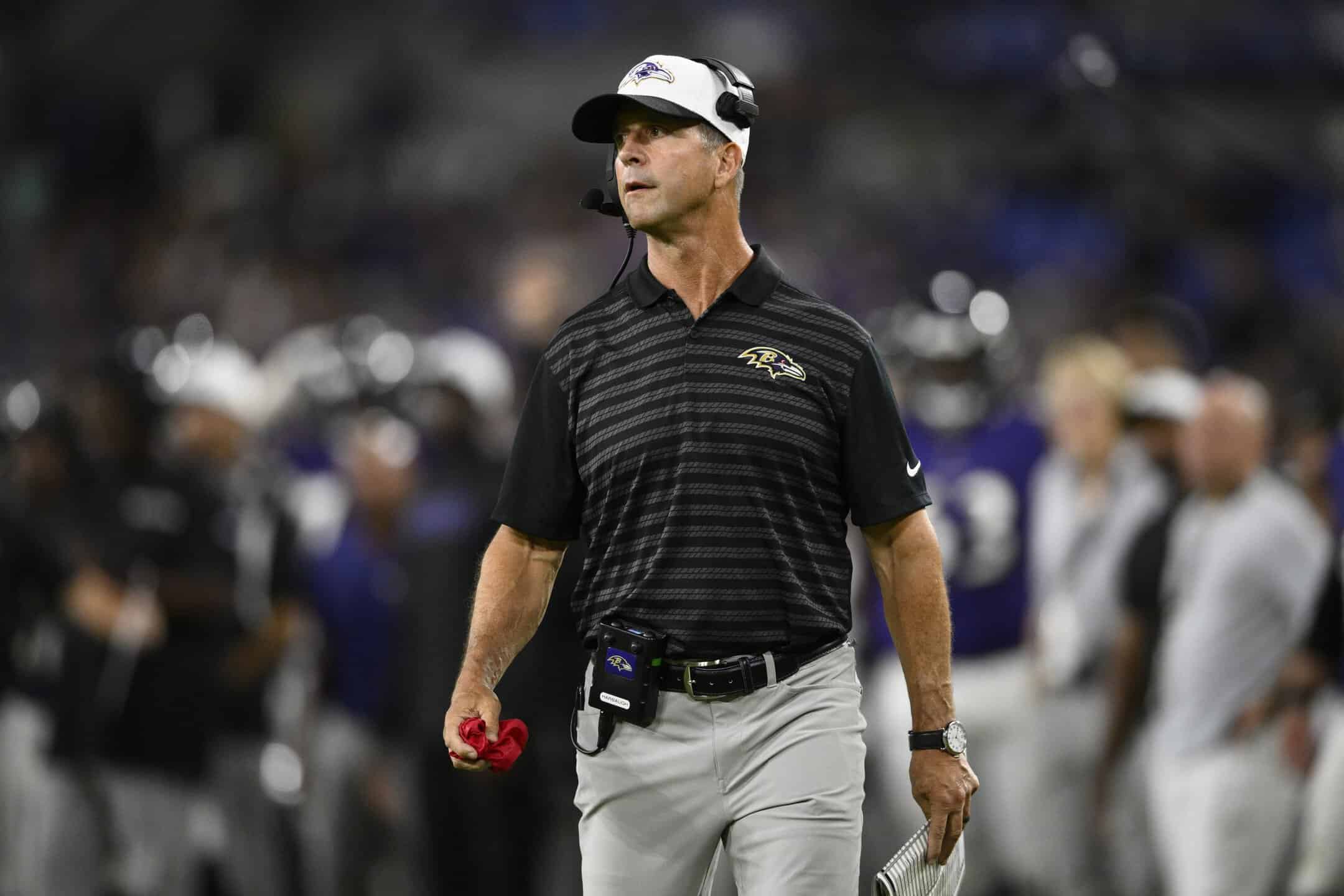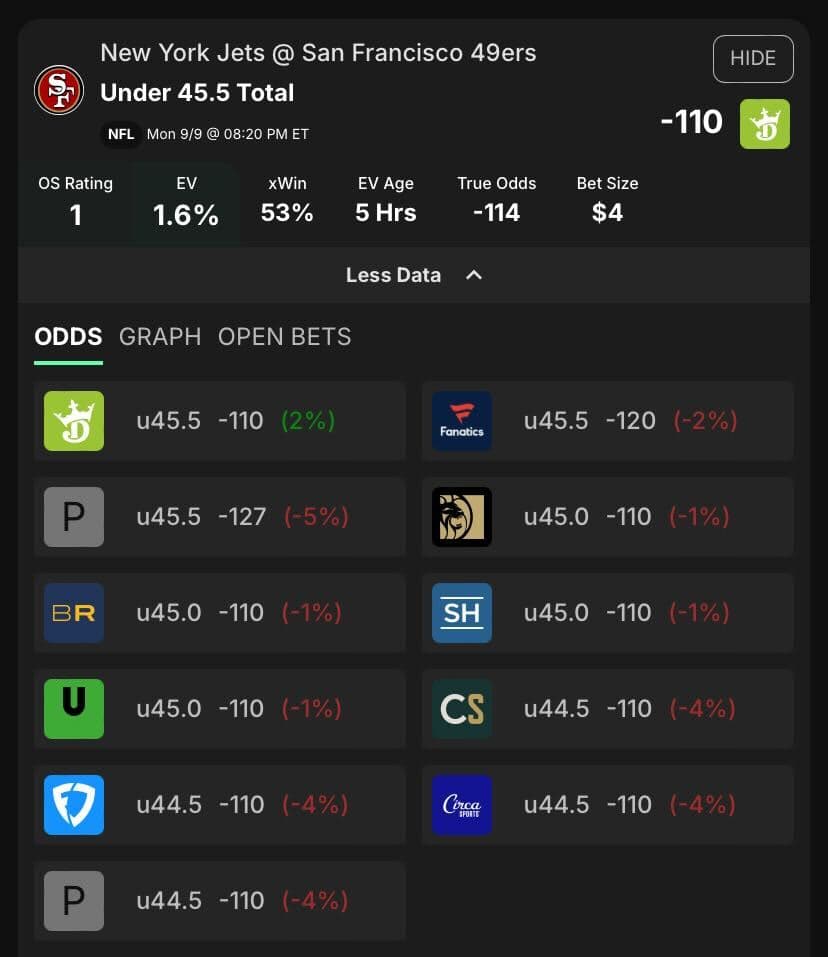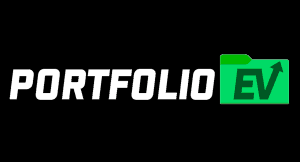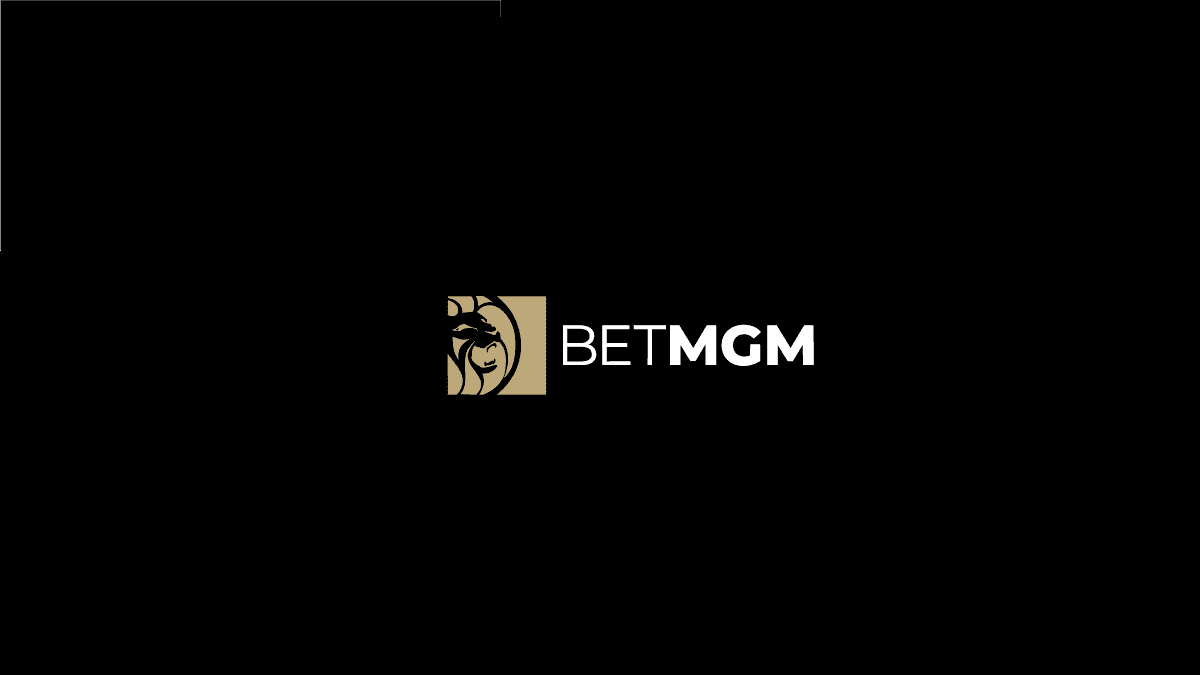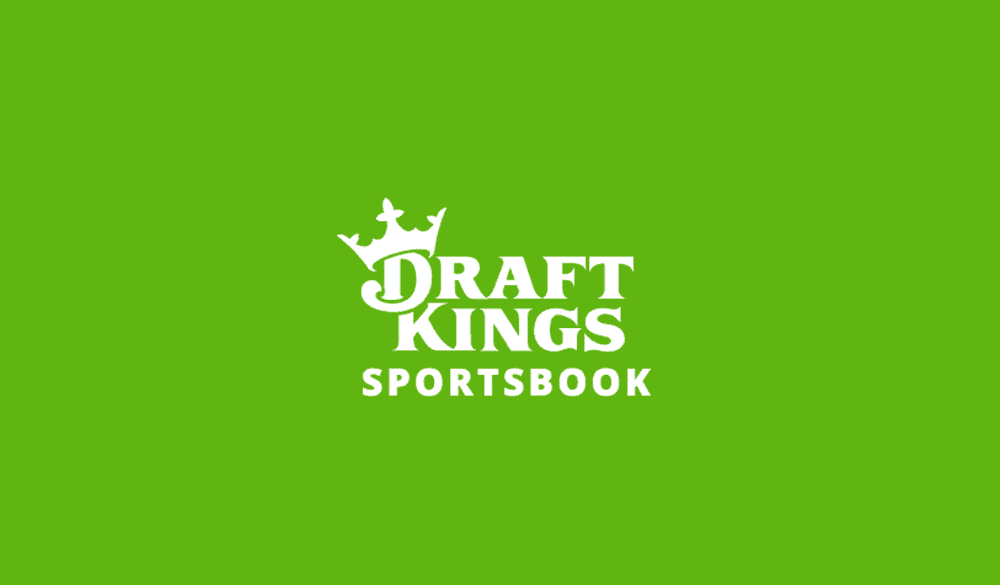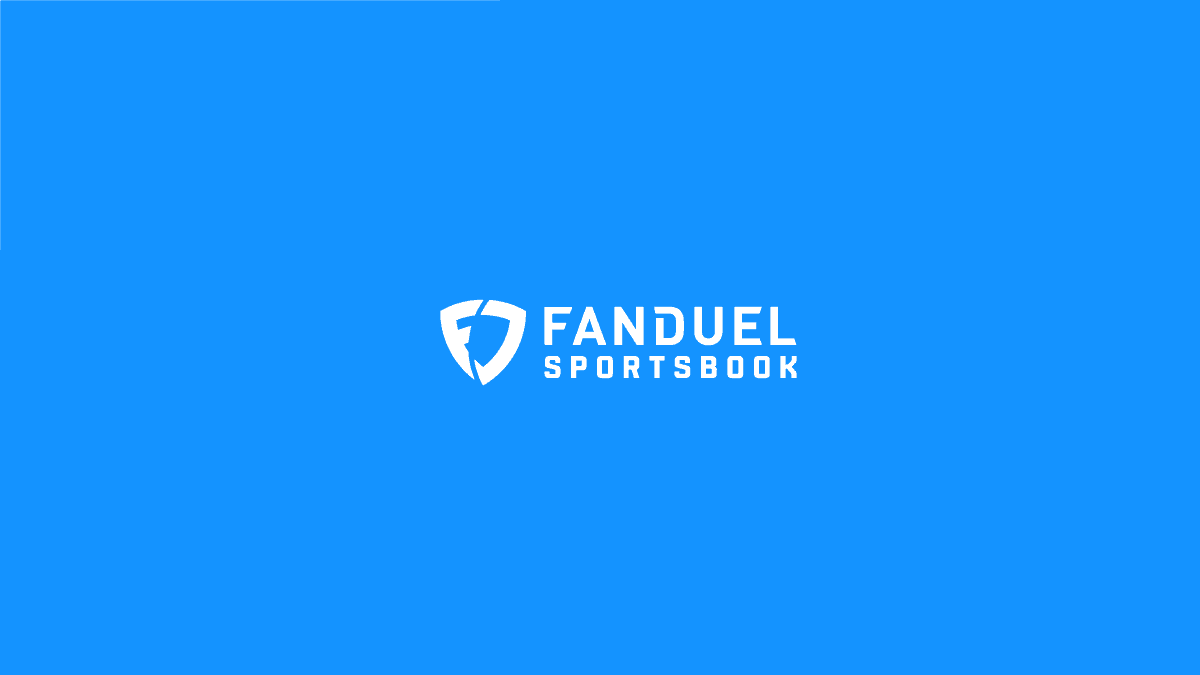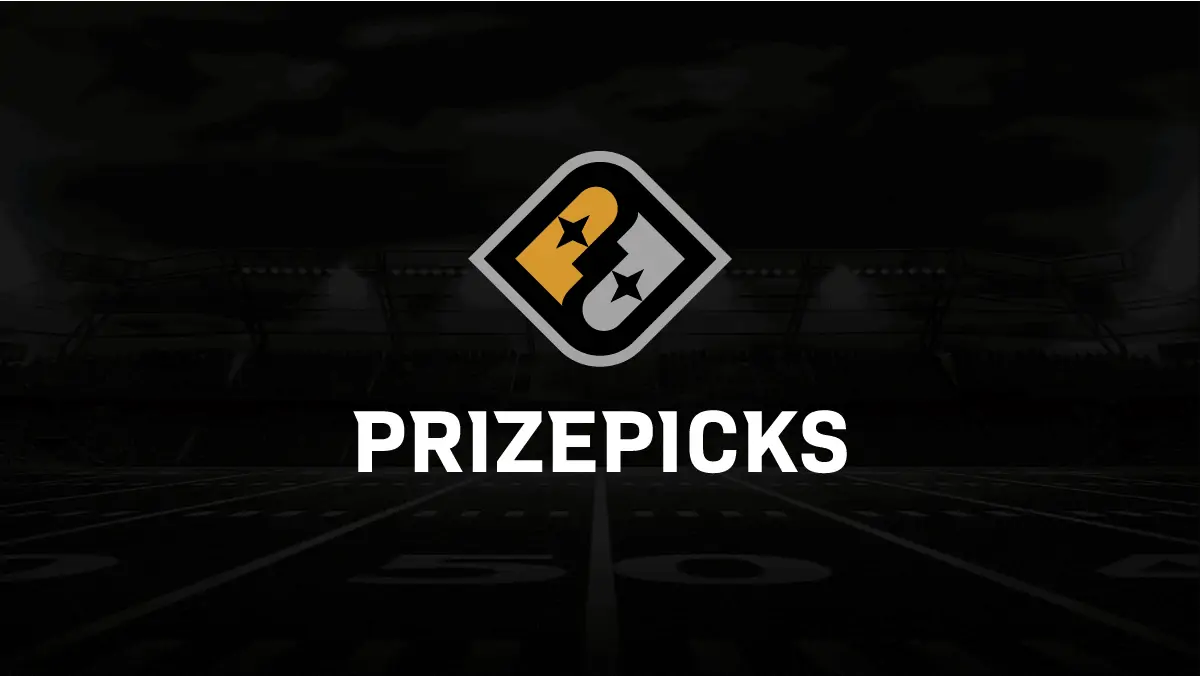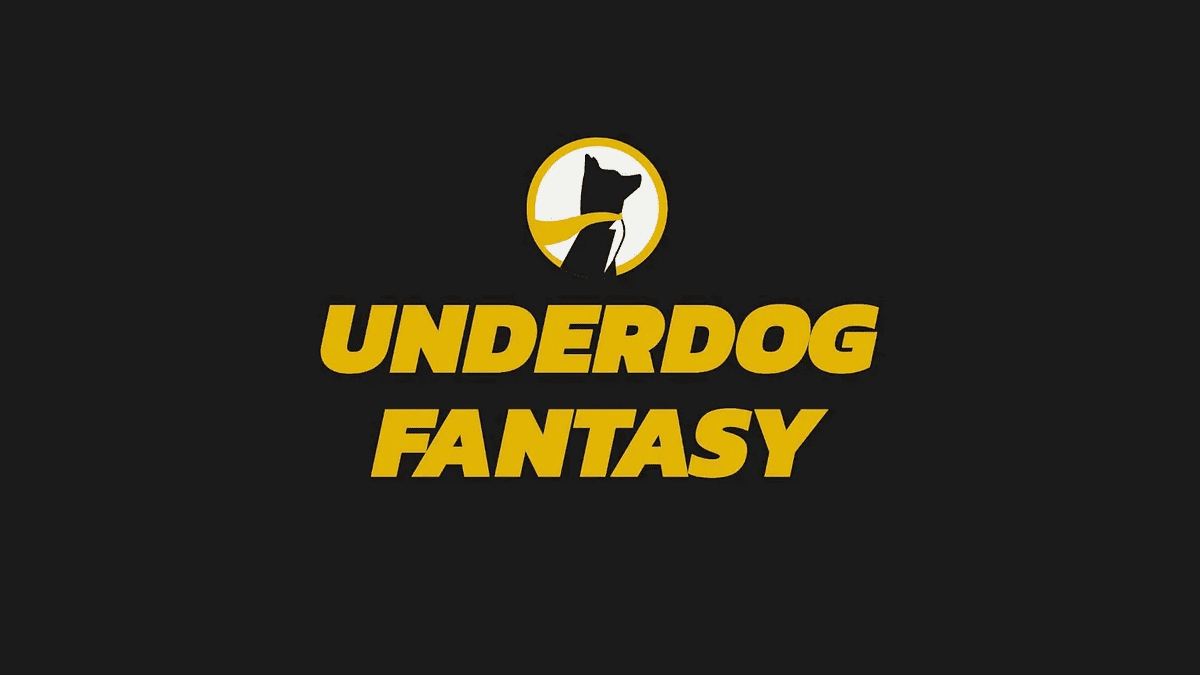If you’re like me, you probably love football. But the biggest problem with loving football is that it only comes around for a few months each year, and when it first returns, it doesn’t mean anything! While the NFL preseason offers bettors and football fans a hit of football, it’s a very different sport. Let’s dive into how to bet on the NFL preseason. We’ll discuss NFL preseason betting strategy centered around finding positive expected value (+EV).
This article will walk you through both market-based and projections-based ways to arrive at +EV bets on NFL preseason betting markets. We’ll get more into what those terms mean later, but, briefly, they concern the types of data you’re looking at to estimate the probability of a given outcome. You can use the same NFL +EV betting strategy during the regular season — and you can use it as an NFL player prop betting strategy! Without further ado, it’s time to discuss how to be a profitable NFL preseason bettor.
How to Bet on the NFL Preseason: Using a +EV Betting Strategy
How to Bet on the NFL Preseason | Finding Positive EV
The only sure way to become a profitable sports bettor over the long run is to develop a consistent method through which you calculate expected value (EV). Expected value is, in simple terms, an estimate of how profitable you expect a bet will be. You need to have some knowledge of this to determine whether you should place a bet — and how much to wager on that bet.
To calculate expected value, you must begin by calculate the probability of a bet actually winning. Let’s take an example — say the Baltimore Ravens were visiting the Washington Commanders, and you estimated that the road team had a 50% chance of winning.
In this case, you could find expected value by taking the difference between what the sportsbooks believed Baltimore’s win probability to be and what you believed it to be. If your expected value is positive, congratulations — you’ve found a good bet! If it’s neutral or negative, well, not so much.
To take it a step further, if the Ravens were a +200 (33.3%) road underdog, you would have 16.7% of positive expected value. If they were a -200 (66.7%) road favorite, you’d have 16.7% of negative expected value. You can then estimate your return on investment with this information.
To calculate the probability of a bet winning in the NFL preseason — or in the NFL regular season, too — you can apply either a market-based or projections-based approach. Let’s dive into how you can calculate those market- and projections-based value estimates.
How to Find Market-Based NFL Preseason Bets
Projections are usually pretty intuitive for sports fans. If you’ve ever been following the box score of game on ESPN, you’ve probably seen their live win probability estimate. To use our Baltimore example, if the Ravens opened the game with a field goal, ESPN may estimate their win probability to be 55%. If you used that estimate to justify betting on Baltimore at +100, you’d be using a projections-based method.
We’ll run through some of what I consider when making NFL preseason betting projections later, but before we get into that, let’s talk about an easier way to do things: employing a market-based method. With so many different sportsbooks, you’ll rarely see them taking action on bets at the same price, allowing you to use the market consensus to find and beat outlier odds.
Again, let’s turn to the Ravens-Commanders game. Sportsbook A lists Baltimore at +150 on the moneyline. Sportsbook B lists them at +100, and Sportsbook C has a +110 available. Sportsbook D, which you know is sharp because of their high limits and low hold, has Baltimore’s moneyline set to +120.
It should be clear by now, but this market is very inefficient. If it’s not clear, let’s turn those odds into sentences:
- Sportsbook A: Baltimore has a 40% chance of winning.
- Sportsbook B: Baltimore has a 50% chance of winning.
- Sportsbook C: Baltimore has an 47.6% chance of winning.
- Sportsbook D: Baltimore has an 45.5% chance of winning.
Now, hopefully it’s clear that Sportsbook A has made an error. The market consensus points to a much higher chance of Baltimore beating Washington than the odds at that book suggest. Through a market-based NFL betting strategy, we can tell that the Ravens are a sharp bet on the moneyline, especially with Sportsbook D charging 5.5% less than Sportsbook A.
Using Portfolio EV to Find Market-Based NFL Preseason Bets
Knowing which books are sharper than others — and knowing at what point your edge overcomes the hold each book, even Pinnacle, a sharp book, is pocketing from your wager — isn’t easy. Fortunately, Portfolio EV does the hard work for you. Let’s take a quick look at an example wager and how our product team describes each of the key terms.
Bet Size: The recommended bet size as a percentage of your bankroll. This metric is based on a fractional Kelly Criterion approach that leads to a reasonable balance of minimizing risk of ruin while maximizing potential reward.
EV: An abbreviation for “expected value,” this metric estimates the long-term profitability of a wager by taking into account the probabilities/payouts associated with each potential outcome.
xWin: The probability of winning the bet implied by the Sharp Sportsbook Algorithm true odds.
OS Rating: The OS rating provides a rating for each +EV bet. An OS rating above 20 signifies an exceptional bet. Ratings between 10 and 20 are highly favorable bets. Finally, a rating between 0 and 10 indicates a solid bet. We factor in the EV, expected win, bet size, and negative geometric drag to calculate this rating.
Hold: The synthetic hold across the entire market, which is the loss a bettor would sustain if he bet both sides of the market to win equal amounts. The larger the hold, the more difficult it is to beat that market. While uncommon, a negative synthetic hold is possible. Negative synthetic holds are arbitrage situations (also known as arbs) where a bettor can guarantee a profit by booking both sides.
True Odds: Odds that represent the real statistical probability of any outcome in a particular sporting event.
Look Up the Coach’s Gameplan | +EV NFL Preseason Betting Strategy
The most basic step to projection-based NFL preseason betting is to know who is playing and for how long. During the preseason, head coaches will determine how many reps they’ll give first-team players before the game, and they’ll often tell reporters of their intentions before the game.
Simply look up quotes from the head coaches of both teams before even trying to formulate an NFL preseason projection. Obviously, teams that are using their starters for a drive or two will tend to play better than teams that don’t.
Knowing the number of drives the first-team offense or defense will be on the field can be especially helpful with derivative markets.
For example, taking a first-half bet for a team using their starters against a team not using theirs can be sharp — especially if you get your action down before the book adjusts to the coach’s statements.
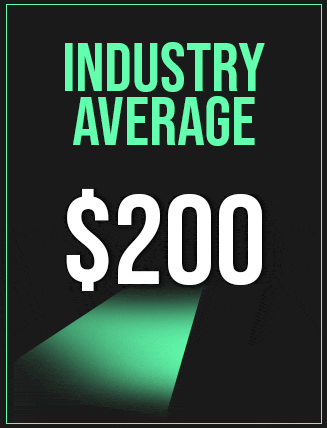
Know the Depth Chart, Especially Quarterback | +EV NFL Preseason Betting Strategy
Once you know how many reps to expect from the first team, dig into the depth chart. Specifically, dig into the quarterback depth chart. Some head coaches won’t even use their backup quarterback early, so it’s pivotal to know (a) what their plan is at this position and (b) who their options are, especially after the first- and second-team units exit the game.
A team that invests heavily in a quality backup may not have much depth behind him. In 2024, a good example would be the Carolina Panthers. Carolina had a former first-overall pick at QB1 (Bryce Young) and the fourth-highest paid QB2 (Andy Dalton). Behind those two? Jack Plummer and Jake Luton. Woof.
Coming into the 2024 preseason, Plummer was an undrafted rookie out of Louisville, and Luton was a journeyman and former sixth-round pick with 110 career pass attempts, all of which had come four seasons prior. Unsurprisingly, in Week 1 of the 2024 preseason, the Panthers opted not to risk the health of their QB1 or QB2, throwing Luton and Plummer to the wolves.
On the other side, the Patriots gave reps to all four of their quarterbacks, including high-paid backup Jacoby Brissett and first-round rookie Drake Maye, due to a battle between them to determine the Week 1 starter.
The Patriots won by two scores.
In short, make sure you know the depth chart at quarterback and what each quarterback has to prove (which can be nothing!). Said other another way, target teams with unsettled quarterback rooms or high-quality third- and fourth-string options. The guys on the bottom of the pecking order will usually be the ones tasked with handling the fourth quarter, and, often, determining the outcome of the game.
Research the Head Coach’s Record | +EV NFL Preseason Betting Strategy
Some head coaches (John Harbaugh) are known for taking the preseason seriously. Other head coaches (Zac Taylor, Sean McVay) are known for not taking it seriously. Heading into the 2024 preseason, Harbaugh had a 44-14 preseason record (and was 40-18 ATS). Taylor (3-9, 6-6) and McVay (7-14, 9-11-1)? Not so much.
While past outcomes aren’t predictive of future outcomes, they can help us gain some insight into a coach’s late-game philosophy in the preseason. Harbaugh is known for going for the win, which often means kicking field goals on fourth down. Other coaches are known for attempting conversions with frequency, usually leading to late-game turnovers as opposed to scores.
That said, it’s possible that a coach can be trying to win their preseason games and failing. Looking at their losing record could lead you to mistakenly believe that they don’t care about the preseason. Make sure to cross-reference whatever trends you’ve dug up with quotes from that coach to determine whether you’ve actually found an edge.
